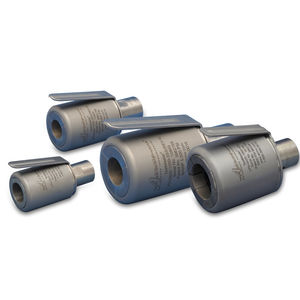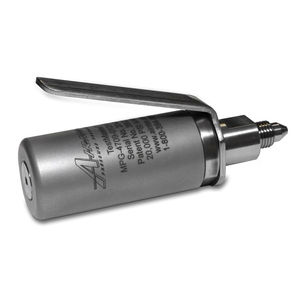
Avionics test instrument 310 aeronauticalcompact

Add to favorites
Compare this product
Characteristics
- Applications
- avionics
- Other characteristics
- aeronautical, compact
Description
The patented TestMaster® Model 310 Series Hydrostatic Hose Test Tools offers fast, snap-on coupling and positive sealing for high-pressure threaded hoses and fittings. The outer collet grip design is beneficial for applications with short threaded ends in a restricted work area, such as aircraft lines. The tool can be used with a wide variety of services including water, oil, or other liquids.
The Model 310 Series Tool is suitable for hydrostatic pressure testing of hoses and fittings with HP or NPT male thread configurations up to 30,000 psi (2,068 bar) for testing according to military, nuclear, automotive, and aerospace specifications, such as API, ASTM, ASME, ISO, DIN, and BS. These tools are designed to meet or exceed flow rate requirements with little or no turbulence.
The Model 310 Series Tool handles standard hose and fitting sizes from 0.25 in. to 0.75 in. HP or NPT male threads.
Maximum Pressure: - Working pressures up to 30,000 psi
(2,068 bar)
Tube OD Range: - 0.25 in. to 0.75 in. HP or NPT male threads
(other sizes considered)
Temperature: - 32° F to 120° F (0° C to 49° C)
Services: - Water, oil, or other liquids on request
Velocity: - Full-flow, high prefill
Tool Operation: - Lever operated
Lever Collet Release: - Fast tool removal
Special Collet Locking Design Principle: - Seals and grips in one motion
Predetermined Internal Tube Stop: - Requires no measuring
Compact, Balanced Design: - Ease of use in limited space applications
Construction: - Precision-machined, heat-treated
stainless steel
VIDEO
Catalogs
*Prices are pre-tax. They exclude delivery charges and customs duties and do not include additional charges for installation or activation options. Prices are indicative only and may vary by country, with changes to the cost of raw materials and exchange rates.






